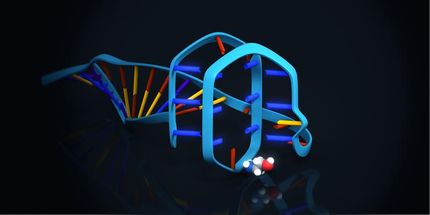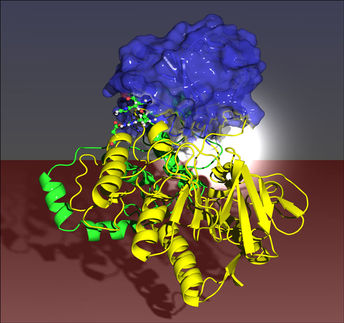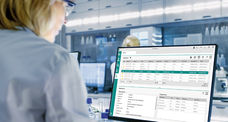New rapid technique detects food bacteria
CU researchers announce new technique for rapidly detecting illness-causing bacteria in food
Advertisement
Cornell University scientists have developed a rapid, less costly and sensitive new technique for detecting group A streptococcus, the bacteria that cause scarlet fever. Details will be announced today at the Institute of food Technologists Annual Meeting and Food Expo in New Orleans.
The presentation by Sam Nugen, a graduate student in Cornell's food science department, will focus on detecting the food-borne bacteria Streptococcus pyogenes (S. pyogenes), but the technique can be applied to a wide variety of bacterial pathogens, including Escherichia coli (E. coli).
The new biosensor works in a test tube and a positive result shows up as a red line on a strip, much like a pregnancy test. Newly designed software gives researchers a powerful tool for increasing the sensitivity of the analysis.
The method may help researchers and companies that are in the business of tracking food-borne pathogens, allowing technicians to determine a source quickly. It may also help to analyze a throat culture swab, to tell if someone has an illness like strep throat.
"We hope to see this technique commercialized, because it is very rapid compared to all the standard methods right now," said Nugen, the study's lead author. Nugen conducted his research in the laboratory of Antje Baeumner, Cornell associate professor of biological and environmental engineering, who is also a co-author of the study.
"It would be great if we came up with something that became a standard," Nugen added.
Current biosensors rely on a time-consuming technique called gene amplification that requires costly equipment: Technicians take a piece of DNA from a sample and add enzymes that make many copies of the DNA. Duplicating or "amplifying" the DNA makes a pathogen easier to detect.
The new process starts with genetic material that is extracted from a food sample. This material, called ribosomal RNA (rRNA), is responsible for translating genetic information carried in DNA into proteins.
Nugen designed the computer software that allows researchers to enter in an rRNA sequence, called a target sequence, that is unique to a specific microbe. The program then determines tiny sequences of complementary DNA -- known as probes -- that are exactly matched to stick to the rRNA target sites. These sequences are then reproduced as genetic material by a biotech company.
To test for the presence of scarlet fever-causing bacteria, a sample of rRNA is placed in a test tube with two of the manufactured probe DNA sequences, designed specifically to bind to the rRNA of S. pyogenes. One of these is called a "capture" probe, and the other is known as a "reporter" probe. The capture probe binds to the S. pyogenes rRNA and anchors it to a zone on a strip of membrane, while the reporter probe, which has a dye attached to it, sticks to another sequence of the S. pyogenes rRNA.
The probes attach to the target rRNA sequence when the test tube is placed in a water bath for about 25 minutes at exactly 41 degrees Celsius. At that temperature, the complementary probe DNA sequence binds to the target RNA sequences.
In a positive result, the capture probe attached to the rRNA target molecule anchors itself to a strip on a membrane. Since the reporter probe with a red dye is also attached to the rRNA molecule, as the material collects on a zone on the membrane, it turns the strip visibly red, much like with a pregnancy test.
The entire process takes only 35 minutes, while traditional gene amplification techniques may take many hours.
Promising early results suggest the sensitive method could detect fewer than 100 cells of a pathogen in just half an hour.
Nugen's software also compares a target site with sequences from other organisms to make sure they don't overlap, which could lead to a misdiagnosis.
"You want to be sure it doesn't detect another organism that shares similar properties," said Nugen.
The study was funded by the National Institutes of Health. Along with Baeumner, Barbara Leonard, a research support specialist in Cornell's biological and environmental engineering department, was also a co-author.
Other news from the department research and development
These products might interest you
Most read news
More news from our other portals
See the theme worlds for related content
Topic world Sensor technology
Sensor technology has revolutionized the chemical industry by providing accurate, timely and reliable data across a wide range of processes. From monitoring critical parameters in production lines to early detection of potential malfunctions or hazards, sensors are the silent sentinels that ensure quality, efficiency and safety.

Topic world Sensor technology
Sensor technology has revolutionized the chemical industry by providing accurate, timely and reliable data across a wide range of processes. From monitoring critical parameters in production lines to early detection of potential malfunctions or hazards, sensors are the silent sentinels that ensure quality, efficiency and safety.





































































